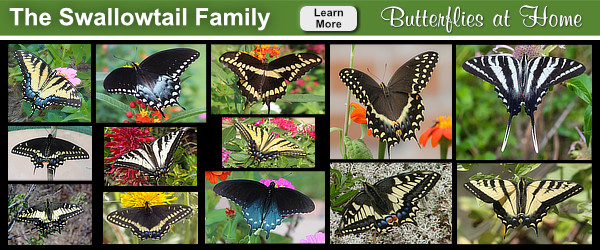Spicebush Swallowtail
Spicebush Swallowtail Butterfly Coloration and Size
The Spicebush Swallowtail (Papilio troilus) is generally black, and marked with broad, black hind wings bordered with pale, greenish spots. Hind wings on the male have a blue-green band, and the female has a blue shading.
The Spicebush Swallowtail wing span is in the 3.5" - 4.5" range.
Spicebush Butterfly Distribution and Habitat
This swallowtail ranges throughout the Eastern United States, but is more common in the south. It typically stays close to wooded areas, and close to the ground. In a typical year 2-3 broods are produced.
It can often be found in woodland areas, swamps, stream banks, and residential gardens. Similarities exist with the Black Swallowtail, but wing patterns are somewhat different.
Spicebush Swallowtail Life Cycle Stages and Duration
| Stage | Typical Duration |
| Egg stage | Generally 4 to 10 days, depending on temperature and host plant |
| Caterpillar (larval) stage | 3 to 4 weeks |
| Chrysalis (pupal) stage | 10 to 20 days (except for overwintering pupae) |
| Adult butterfly stage | 6 to 14 days |
Spicebush Caterpillar
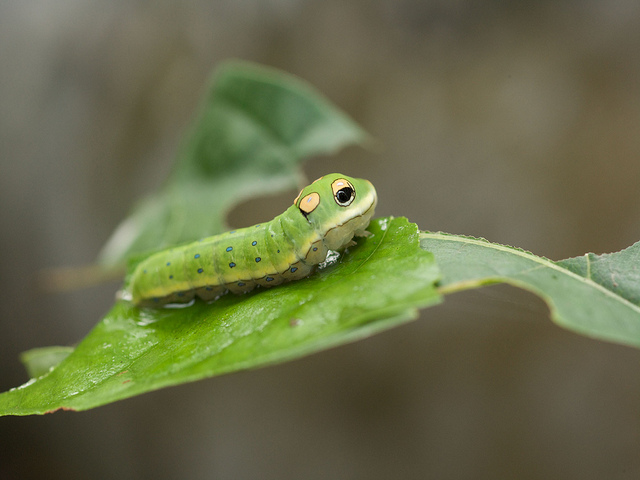 Spicebush Swallowtail Caterpillar Spicebush Swallowtail Caterpillar |
The Spicebush caterpillar initially appears as a bird-dropping camouflage, then transforms into a brilliant, bright green "predator" with enormous false "eyes".
They spin silk to tighten a leaf around itself, giving the caterpillar a safe place to hide during the day; they resume feeding at night.
Nectar and Host Plants Used by the Spicebush Swallowtail
The favorite host plants of the Spicebush Swallowtail include spicebush, sassafras, camphor trees, red bay, and sweet bay (see plant images at the bottom of this page).
Nectar plants include verbena, zinnias, lantana, periwinkles and other flowers.
Identification of Male and Female Spicebush Swallowtail Butterflies
A side-by-side comparison of the coloration and markings of the male and female Spicebush Swallowtail is shown below.
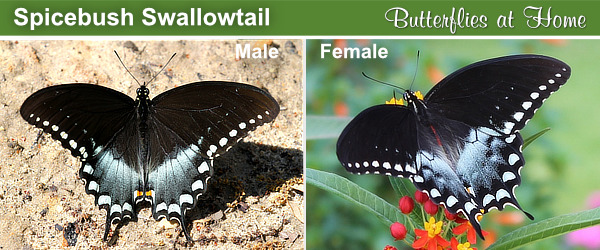

Spicebush Swallowtail and Black Swallowtail Comparison
The chart below shows the differences seen in the ventral views of the similar Black Swallowtail and the Spicebush Swallowtail. The Spicebush has a bluish-green colored "swosh" and is missing one orange spot.
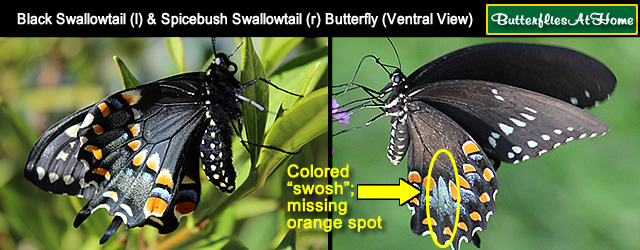

Photos of Spicebush Swallowtail Butterflies
Female Spicebush Swallowtail Butterfly
Spicebush Swallowtail Butterfly
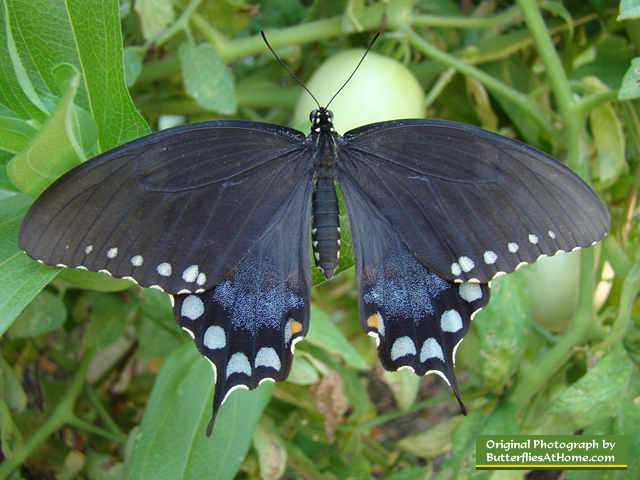
Spicebush Swallowtail Butterfly (dorsal view)
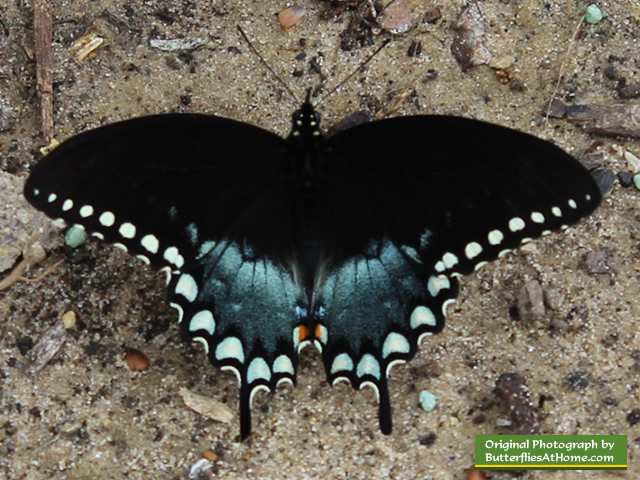
Spicebush Swallowtail Butterfly (ventral view)
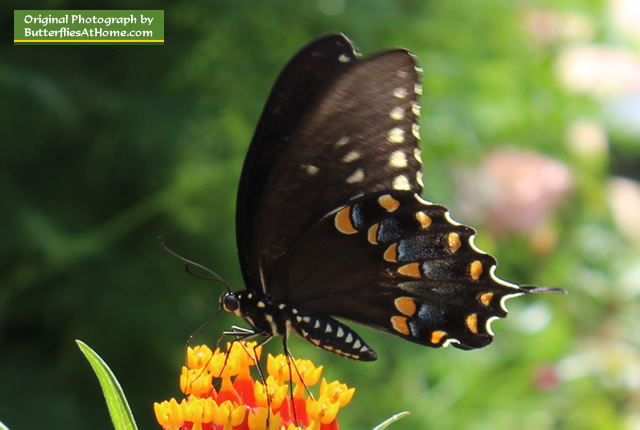 |
"The Chase" ... male Spicebush Swallowtail Butterfly (left) with its greenish coloration
pursues the female with her blue coloration
"The Chase" continues ... male Spicebush Swallowtail Butterfly (bottom right) in pursuit of the female
Close-up view of Spicebush Swallowtail Butterfly

Close-up view of Spicebush Swallowtail Butterfly in flight
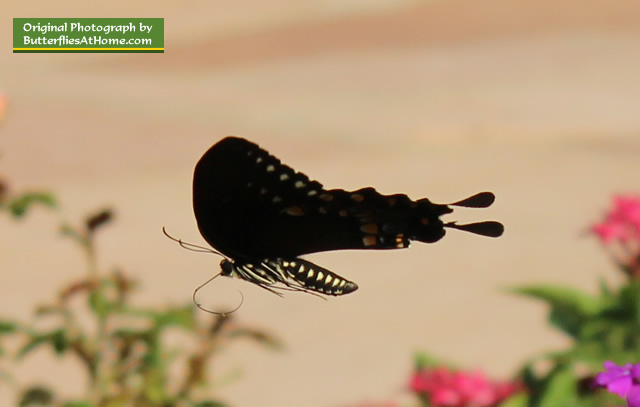
Female Spicebush Swallowtail with large part of her right wing missing ... but still flying from one Zinnia to the next, with no problem! Perseverance personified!
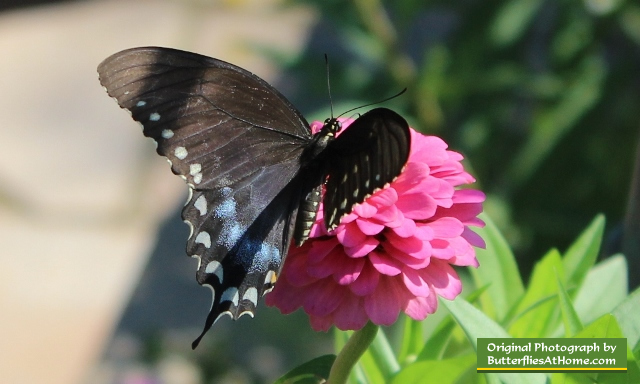
Another Spicebush Swallowtail with large part of left wing missing
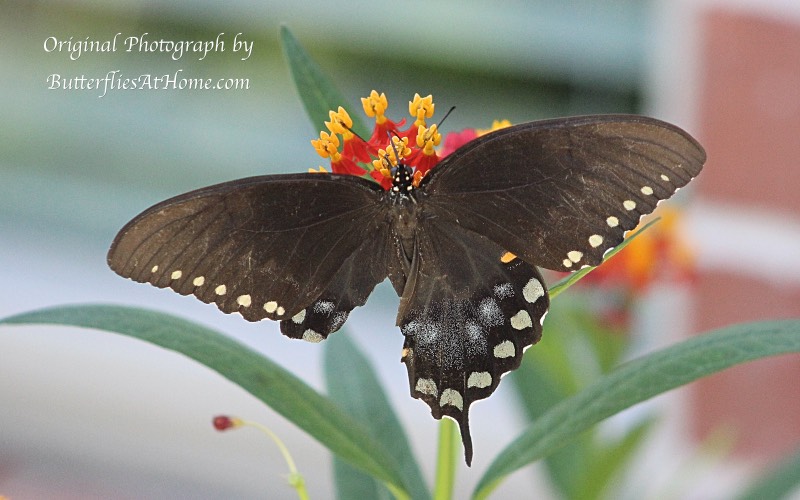
 |
|||
Check out these popular butterfly items at our Amazon Store |
|||
| Kaufman Field Guide to Butterflies of North America 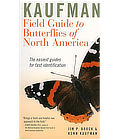 |
The Life Cycles of Butterflies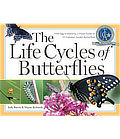 |
Peterson First Guide to Butterflies and Moths of North America 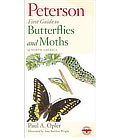 |
|
Outdoor Butterfly Hanging Flag |
Butterfly Habitat Cage |
Butterfly Sterling Silver Pendant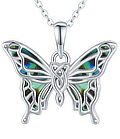 |
|
|
|||
Photos of Spicebush Swallowtail Host Plants
Sassafras Tree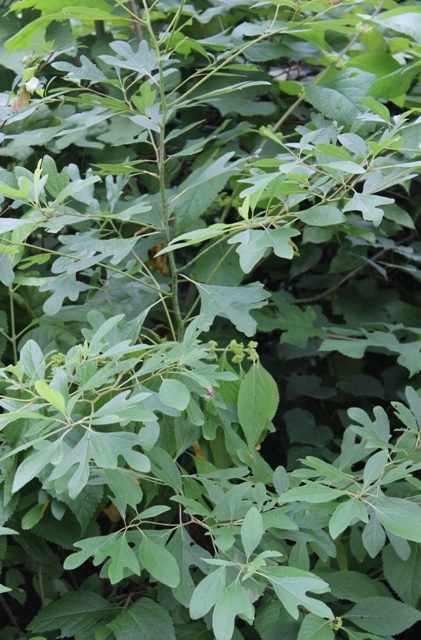 |
Spicebush Plant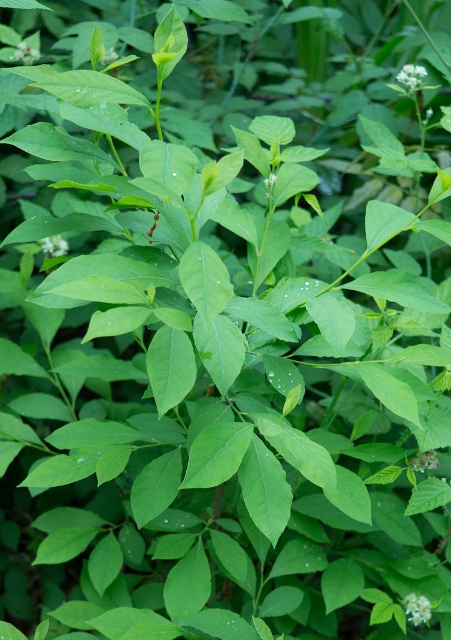 |
Camphor Tree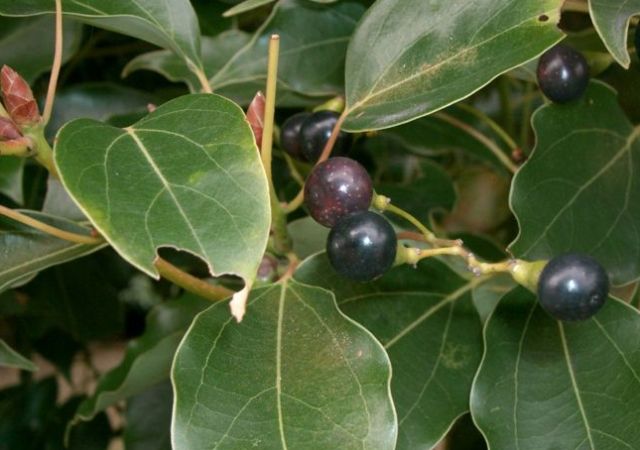 |
Red Bay Tree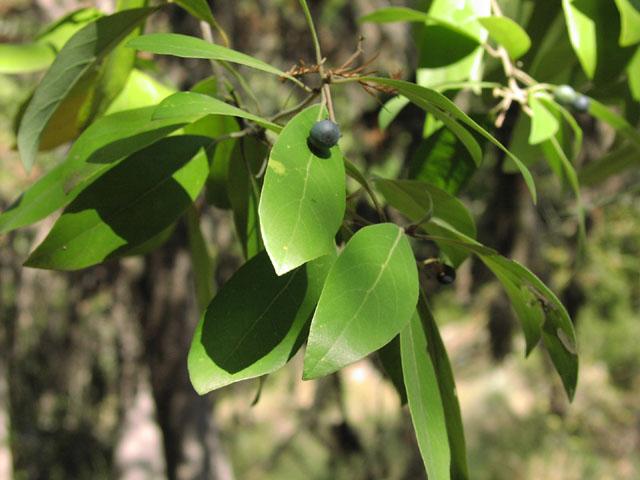 |

